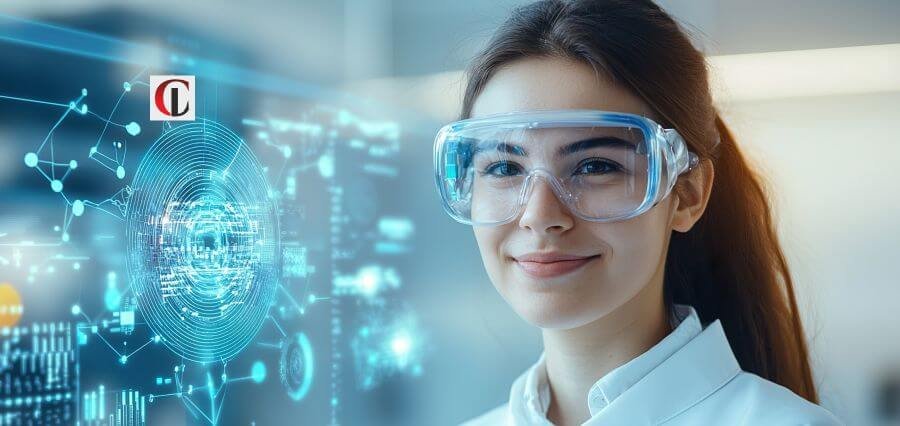Learning is the cornerstone of individual growth and civic progress. In this ever-accelerating, globally connected world, old ways of teaching are no longer adequate for the learner of today. With each step into the 21st century, an increasing demand is created for stronger, more innovative, and more critical thinkers. Education systems must adapt to answer this demand by adopting change in content, delivery, design, and philosophy. New education strategy offers a technique of releasing dormant potential in students by involving students, getting responses more quickly, and more importantly, more meaningfully. These new approaches don’t simply do more to raise educational achievement. They enable a more integrated and healthier process of development by fulfilling emotional, intellectual, and social requirements of students. Compared to memorization and testing under conditions, the new instruction process focuses on inquiry, discovery, and problem-solving.
Personalized Learning and Student-Centered Model
The greatest change in schools over the past couple of years is schools prioritizing personalized learning more. The method attempts to personalize the learning process based on individual students’ needs, interests, and study habits. As opposed to buying a generic curriculum that everyone must fit into, personalized learning offers the potential for a more dynamic and tailored route to learning. Through the use of data, technology, and students’ own voices, teachers are able to develop learning routes that can be taught at a pace that varies and sequence of learning that can differ. This allows students to be heard and responded to, and it results in greater motivation and engagement.
Student-centered takes this idea further by making the students themselves members of their own learning communities. Here, instructors act as facilitators and play roles of mentor, guide, and motivator but not director. Students do have the choice about what they learn, how intensely they work on a thing, and how they display having learned anything. Autonomy brings about some intrinsic motivation and sense of responsibility, something vital to lifelong learning. Students can think critically, resolve problems, and self-manage if they are willing to learn. Student-centered and individualized teaching is not grade-dependent; it is more student autonomy in independence, confidence, and resilience.
Collaborative and Experiential Learning Environments
Experience-oriented learning and teamwork are common features of some of the new learning models. They try to avoid hearing and memorizing passively by engaging the learners actively in actual projects and team work. Collaborative learning engages students in learning together in an attempt to learn ideas, solve issues, and come up with solutions. Collaborative learning builds solid interpersonal skills like communication, empathy, and teamwork. It also aids in bringing the students to learn from one another, accept differences of opinion, and arrive at a common negotiated meaning to challenging issues.
Experiential learning has such a process as an addition by situating learning on the nearby-at-hand, experiential phenomenon. Whether done through project-based learning, simulation, internship, or volunteer service, experiential learning affords students an opportunity to implement what they have learned. Practice solidifies learning as it anchors learning to the real world and makes learning not just concrete but also memorable as a result of the fact that the learner gets to experience firsthand the immediate outcomes of his or her work. For instance, a student of environmental science may participate in community conservation work where he learns theory and practices and also develops interest in the subject.
Technology for Higher Learning Outcomes
Technology is at the forefront in its role in transforming learning in the modern world. Technology has the potential to transform learning outcomes and create space for learning. Computer software and programs facilitate individualized learning, instant feedback, and access to vast storehouses of material not seen in regular classrooms previously. Virtual classrooms, instructional programs, and interactive applications support multiple learning styles and allow students to learn at their own pace. This makes them particularly useful for students who will most likely get themselves into a bind in regular environments or who need that little bit of extra help.
Aside from offering expanded access and participation, technology is also assisting in the building of key skills in the future. A degree of computer literacy is a key skill in nearly any line of work now. Through incorporating technology in normal operations, schools can equip students to be successful and contribute to a technologically mediated world. That is, to be capable of searching the internet for knowledge, working together at a distance, and employing electronic aids to communicate and produce well. It is also beneficial to teachers themselves since technology enables teachers to track student learning more accurately and adjust instruction to suit.
Conclusion
Freedom with new education practices is a cultural shift in how one thinks and produces learning. It’s rethinking teacher and student roles, reconfiguring the classroom, and reframing measurement. By putting strengths first, constructing collaboration, valuing experience-based learning, and harnessing technology, educators can construct more engaging, more just, and more effective learning environments. They’re not educating students to test, but to thrive in a more complicated, interdependent world. And as these technologies become more and more ubiquitous, the impact will be felt, not only on the level of the school assignment, but on the level of engaged, able, and confident citizens.
Read More : Top 10 Visionary Leaders Transforming Data Centers in 2025

